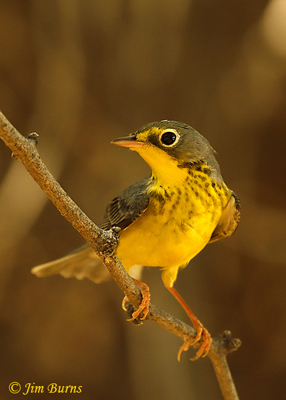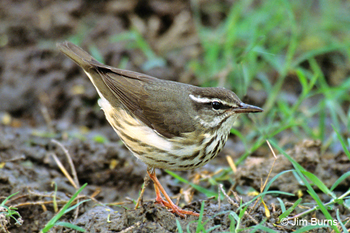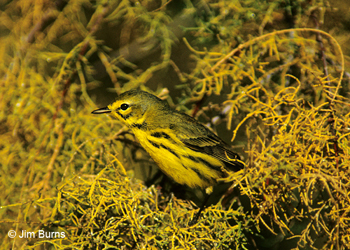Magnolia Warbler |
Canada Warbler |
Not counting Olive Warbler and Yellow-breasted Chat, the taxonomic anomalies in the warbler tribe, there are 51 regularly occurring warblers in North America, 31 in the East, 13 in the West, and 7 found in both. In our 40 years in Arizona I have seen 25 of those eastern warblers here, in state, 26 if I hadn’t whiffed 5(!) times on the Black-throated Green in Scottsdale’s Northsight Park this spring. That’s surely a much higher percentage than the number of western hummers I would have seen in half a lifetime east of the Mississippi.
My eastern warbler sightings in Arizona range all over the board from 7 Chestnut-sideds, one in the bush right outside our computer room window, to one each of such totally unexpected vagrants as Blue-winged, Golden-winged, and Cape May. The most fascinating thing is for some of these eastern vagrants my photographs in Arizona are the best I’ve gotten of the species, despite several photo trips east of the Mississippi to legendary migration hotspots and breeding grounds there.
This begs the question, of course, why? Parts of the answer are obvious. I’ve had tires on the pavement and boots on the ground here for 40 years, there are more and more birders out looking, especially now during this pandemic, and optical equipment, reporting, and recording technology has gotten way better over the years. Yes, I know birds have wings and don’t study the maps and routes in the guide books, but there may also be more in play.
A perusal of the distribution maps of many eastern warblers, some of which have already been reported in Maricopa County this fall (Cape May, Magnolia, Blackburnian, Chestnut-sided, Palm, Canada) tells us, though they may be “eastern” in the lower forty-eight, they actually breed westward farther north across Canada into that country’s prairie provinces and northern Rockies. These species’ “normal” migratory route is mostly down the east side of the Rockies, but some show up yearly as transients and overwintering sojourners in coastal California.
This fall for sure, and probably for the past decade, if you were an “eastern” warbler, the chances were good that you had one of three possible outcomes to your southward migration, the most fraught and physically taxing event of your avian life: you made it; you were forced by fire and its toll on the insect population to leave before your fat reserves built up and you died en route (for example, New Mexico in 2020); you became totally disoriented by smoke inhalation and ash cloud, blundered off your evolutionary path, and crashed in Arizona.
Since southward migration began in July in this environmentally cataclysmic year of fire but no rain, besides the six species mentioned above, Ovenbird, both waterthrushes, Blue-winged, Black-and-white, Prothonotary, Black-throated Blue, Tennessee, Kentucky, Hooded, American Redstart, Northern Parula, and Blackpoll Warblers have all been reported somewhere in Arizona. That’s an amazing 19 species, over half of all the warblers generally considered “eastern.”
Transient, vagrants, outliers, call them what you will, but these unexpected and seemingly out of place warblers always attract those amongst us who keep lists and the newly initiated seeking fresh spark birds. This is a good thing. It grows our game, which can only increase the numbers of the environmentally aware. Indeed, one weekend morning the crowd discretely following the first fall male Palm Warbler on his sunrise breakfast rounds at Gilbert Riparian Area was so large I bailed out because, although almost all were masked up, maintaining responsible social distancing became difficult.
All the warbler images accompanying this article were taken in Arizona, and all represent my best image of the individual species. With these eastern Warblers in the west comes this conundrum. We are delighted to see them, and seek them out actually, because of their beauty and rarity, but was 2020 “just a good year” as a couple of Arizona’s experts have told me, or should we increasingly recognize them as possible harbingers of the existential issues of our own species’ overpopulation and reliance on fossil fuels? This is food for thought and fuel for environmental activism.
Louisiana Waterthrush |
Prairie Warbler |



